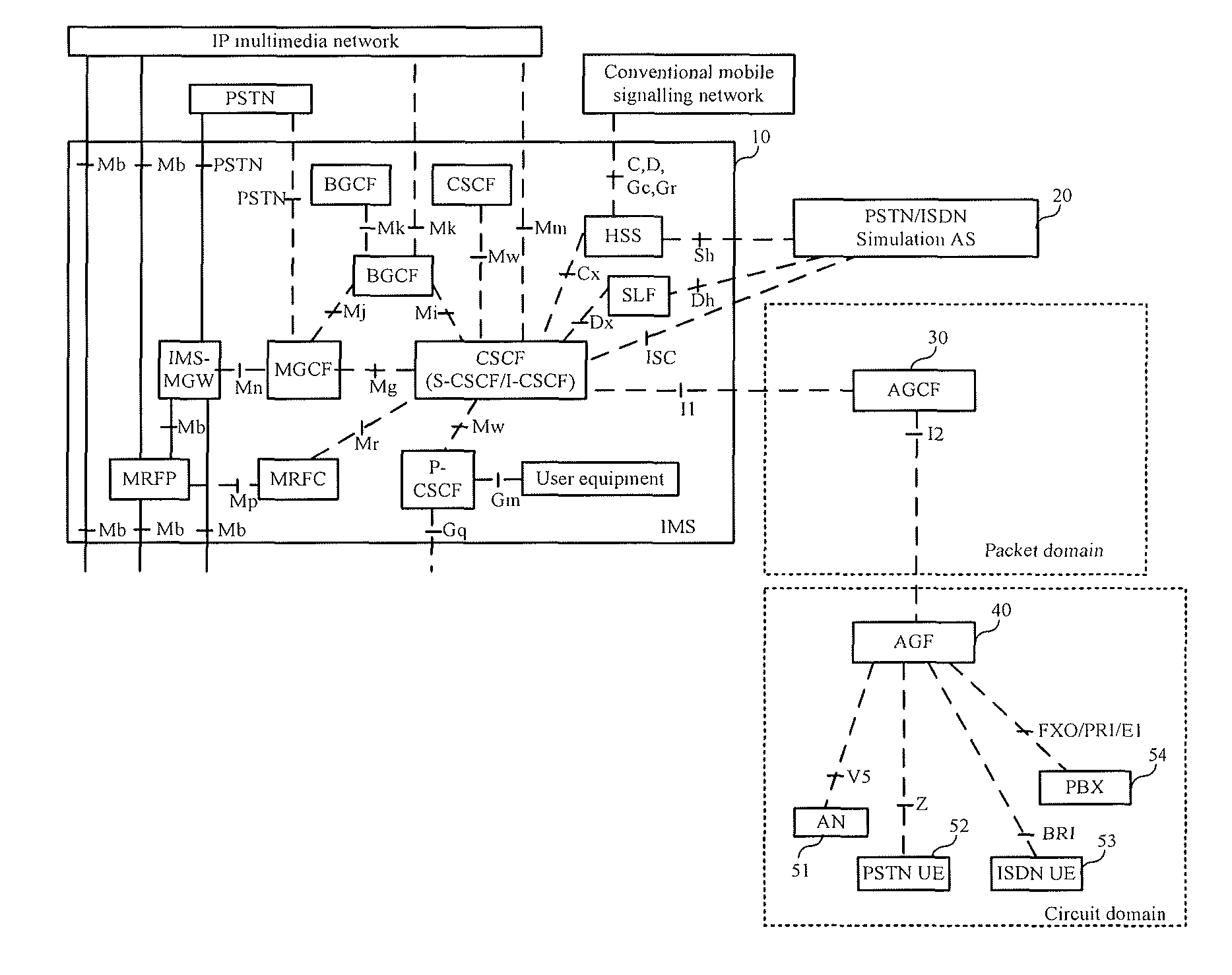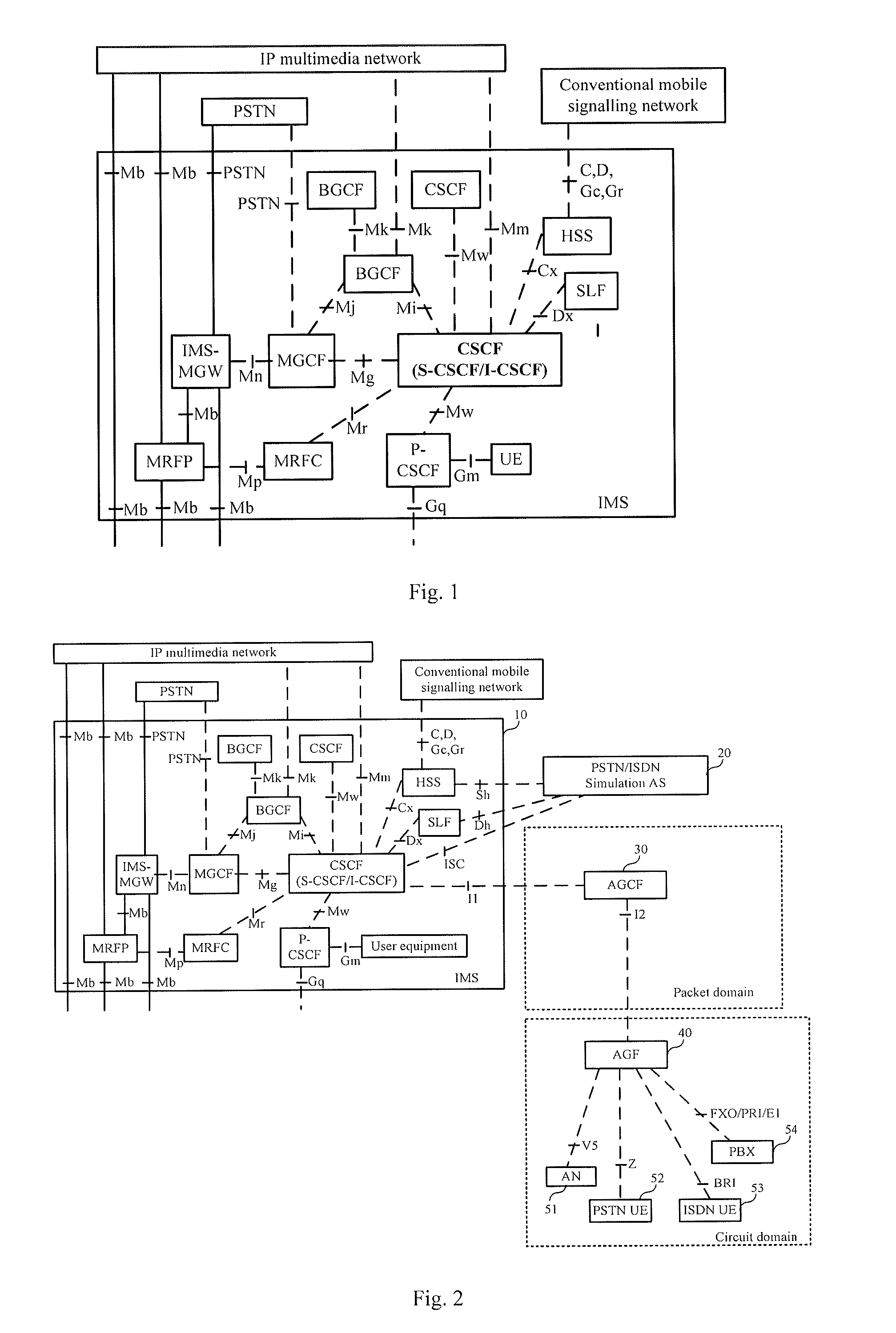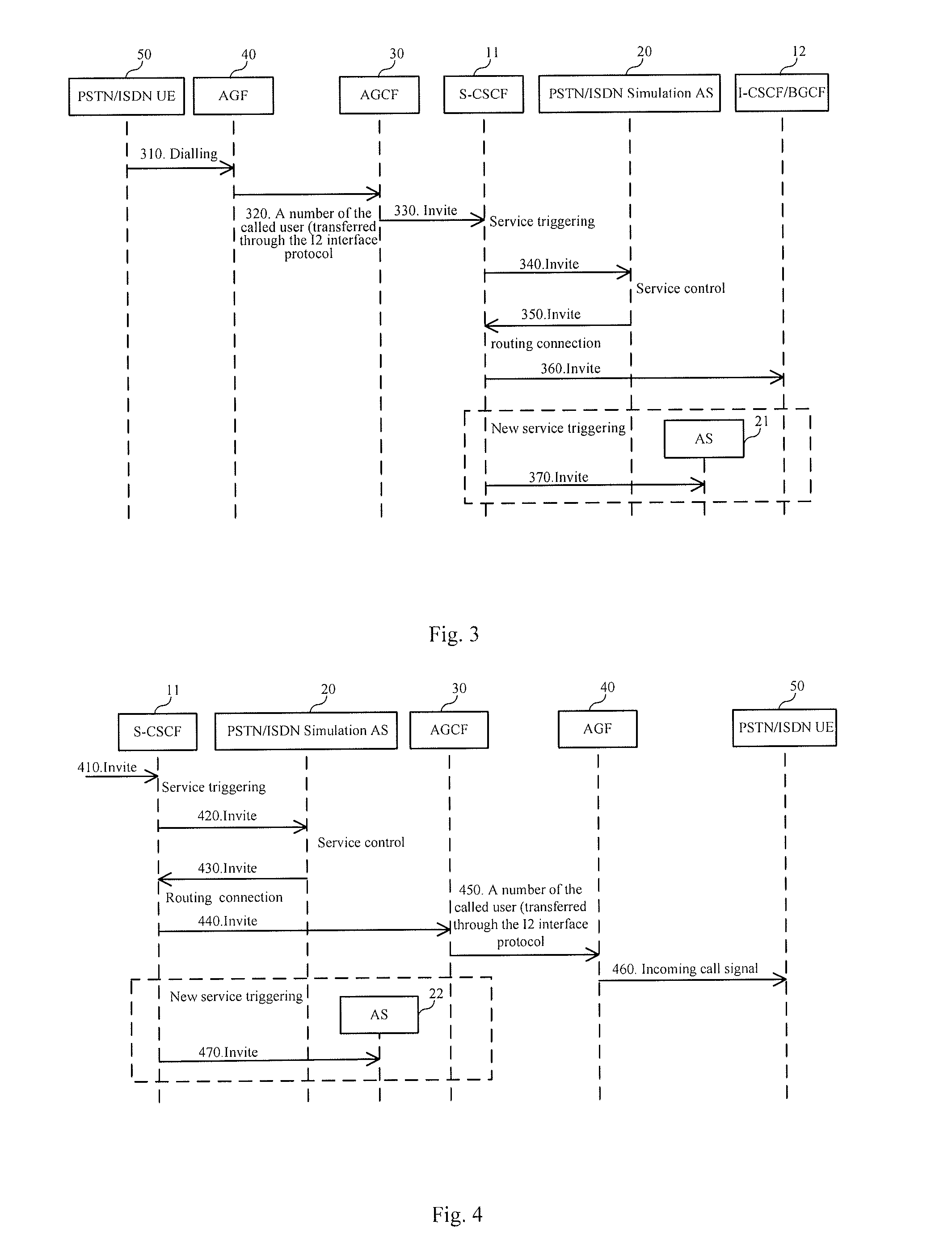System and method for processing packet domain signal
a packet domain and packet technology, applied in the field of system and method for processing packet domain signals, can solve the problems of increasing potential risks, poor flexibility, and unfavorable rapid deployment and extension of services
- Summary
- Abstract
- Description
- Claims
- Application Information
AI Technical Summary
Benefits of technology
Problems solved by technology
Method used
Image
Examples
Embodiment Construction
[0073]In an embodiment of the present invention, a new network node, that is, an AGCF, is introduced to the IMS defined in the 3GPP R5 / R6 standard. Through managing an access device, a PSTN user and an ISDN user are able to access an IMS domain, and PSTN / ISDN services are provided to the PSTN user and the ISDN user. Furthermore, functions of each network node in the IMS defined in the 3GPP standard remain unchanged, and an accessing user may be regarded as a user in the IMS domain, such as a 3G mobile user because the AGCF shields differences between accessing users. The PSTN / ISDN services may be implemented by the AGCF, or be managed by a PSTN / ISDN Simulation Application Server (AS), i.e. a first application server, in the IMS in a centralized manner; or a basic service and a supplementary service are managed by the AGCF while an extended value-added service is managed by the PSTN / ISDN Simulation AS.
[0074]The network architecture and the principle of the system for processing the p...
PUM
 Login to View More
Login to View More Abstract
Description
Claims
Application Information
 Login to View More
Login to View More - R&D
- Intellectual Property
- Life Sciences
- Materials
- Tech Scout
- Unparalleled Data Quality
- Higher Quality Content
- 60% Fewer Hallucinations
Browse by: Latest US Patents, China's latest patents, Technical Efficacy Thesaurus, Application Domain, Technology Topic, Popular Technical Reports.
© 2025 PatSnap. All rights reserved.Legal|Privacy policy|Modern Slavery Act Transparency Statement|Sitemap|About US| Contact US: help@patsnap.com



